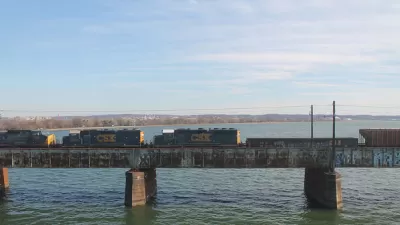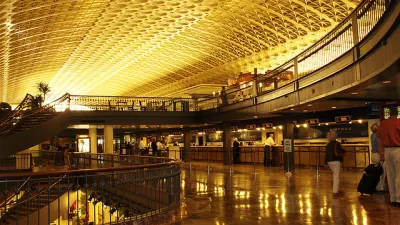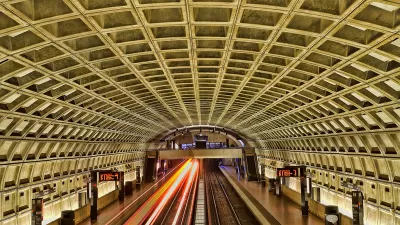D.C.'s ridership is down even as density around stations is up. More residents are choosing to drive or bike.

D.C. Metro ridership is falling at a concerning rate, even as more people move to the areas with good transit access. "According to census data provided to Express by the city’s planning office, about 200,000 households were living within a half-mile of a Metro station in the period between 2012 and 2016, about 15,000 more than in the previous five-year period," Kery Murakami writes for the Washington Post. Density is a key factor in how well transit can work. But in D.C. many riders are switching to driving.
At the same time active modes have been growing as well. "The number of those walking or commuting by another means — like biking, scootering or taking a ride-share service — grew by a third," Murakami reports. There have been a few bright spots, "Ridership did grow at seven of D.C.’s 40 Metro stations, as the neighborhoods around them grew," Murakami writes. But on balance the system has had trouble keeping up with the competition.
FULL STORY: More people are living near Metro stations. But fewer are actually riding the trains

Study: Maui’s Plan to Convert Vacation Rentals to Long-Term Housing Could Cause Nearly $1 Billion Economic Loss
The plan would reduce visitor accommodation by 25,% resulting in 1,900 jobs lost.

Alabama: Trump Terminates Settlements for Black Communities Harmed By Raw Sewage
Trump deemed the landmark civil rights agreement “illegal DEI and environmental justice policy.”

Why Should We Subsidize Public Transportation?
Many public transit agencies face financial stress due to rising costs, declining fare revenue, and declining subsidies. Transit advocates must provide a strong business case for increasing public transit funding.

Paris Bike Boom Leads to Steep Drop in Air Pollution
The French city’s air quality has improved dramatically in the past 20 years, coinciding with a growth in cycling.

Why Housing Costs More to Build in California Than in Texas
Hard costs like labor and materials combined with ‘soft’ costs such as permitting make building in the San Francisco Bay Area almost three times as costly as in Texas cities.

San Diego County Sees a Rise in Urban Coyotes
San Diego County experiences a rise in urban coyotes, as sightings become prevalent throughout its urban neighbourhoods and surrounding areas.
Urban Design for Planners 1: Software Tools
This six-course series explores essential urban design concepts using open source software and equips planners with the tools they need to participate fully in the urban design process.
Planning for Universal Design
Learn the tools for implementing Universal Design in planning regulations.
Smith Gee Studio
Alamo Area Metropolitan Planning Organization
City of Santa Clarita
Institute for Housing and Urban Development Studies (IHS)
City of Grandview
Harvard GSD Executive Education
Toledo-Lucas County Plan Commissions
Salt Lake City
NYU Wagner Graduate School of Public Service





























